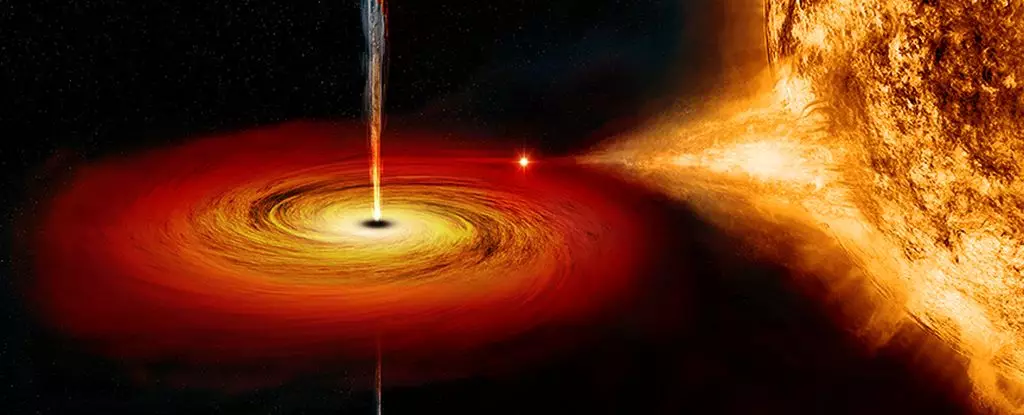

The recent revelation of the detailed mechanics of matter falling down onto a black hole from outside the event horizon has provided a deeper understanding of the gravitational forces at play in these extreme cosmic environments. The theory predicted by Einstein has finally been confirmed through observational evidence, shedding light on the mysterious ‘plunging region’ that exists around black holes.
In the realm of black holes, matter approaching from the outer regions does not simply fall straight down in a linear path. Instead, it spirals and swirls around the black hole, following a circular orbit before reaching a point where it can no longer maintain stability and plunges straight down beyond the event horizon. This analogy of a river turning into a waterfall illustrates the transition from a stable orbital path to the final descent towards the black hole.
The study conducted by theoretical physicist Andrew Mummery and his team at Oxford University focused on an active black hole known as MAXI J1820+070, located approximately 10,000 light-years away. By analyzing X-ray data from this black hole system, the researchers were able to identify the distinctive emissions from the plunging region, providing undeniable proof of its existence as predicted by Einstein’s theory of gravity.
Using numerical simulations and observational data obtained from the X-ray NuSTAR and NICER instruments, the researchers were able to match the glow emitted from the plunging region with the simulations, confirming the accuracy of their models. This breakthrough discovery establishes a new method of studying the extreme gravitational fields near black holes, opening up opportunities for further exploration and understanding of these cosmic phenomena.
The identification of the plunging region around black holes not only validates Einstein’s theory but also presents a new avenue for astrophysicists to investigate the gravitational forces at work in these cosmic entities. With the ability to study multiple black holes in the galaxy using this technique, researchers can delve deeper into the mysteries of these enigmatic objects and gain insights into the fundamental nature of gravity in the universe.
The recent discovery of the plunging region around a black hole marks a significant advancement in our understanding of the complex dynamics of matter falling into these massive gravitational sinks. By combining theoretical predictions with observational evidence, scientists have unveiled a new chapter in the study of black holes, offering fresh perspectives on the extreme environments that exist in the vicinity of these cosmic behemoths.
In the realm of software development, the ability to swiftly and accurately address bugs is…
The realm of quantum computing and communication is not just an abstract dream anymore; it…
In a remarkable leap for the field of material science, a collaborative research initiative has…
Throughout Earth's vast history, our planet has endured five major mass extinction events that reshaped…
Rainfall is a vital element of our planet’s hydrological cycle, yet many aspects of its…
On a night when the universe aligns, a mesmerizing phenomenon awaits: the appearance of the…
This website uses cookies.